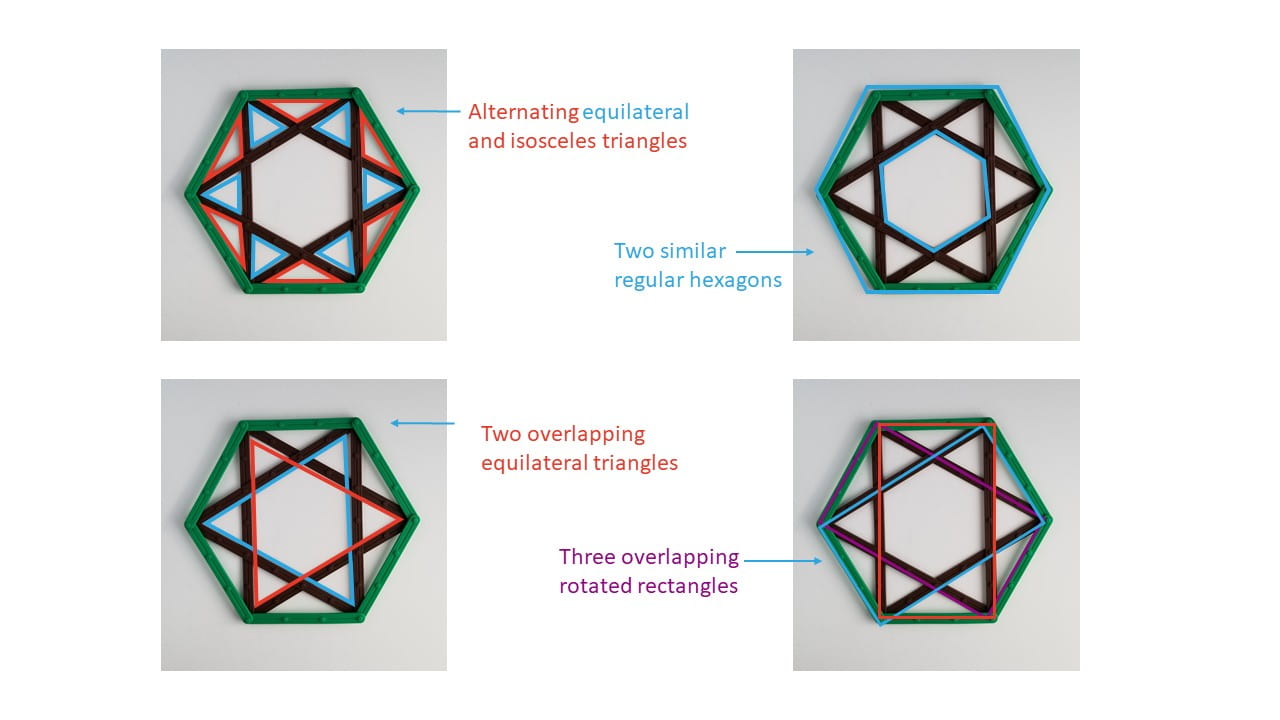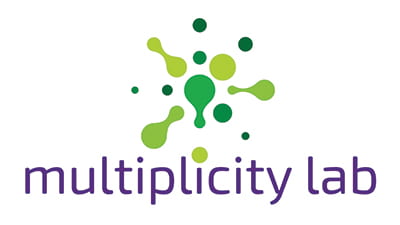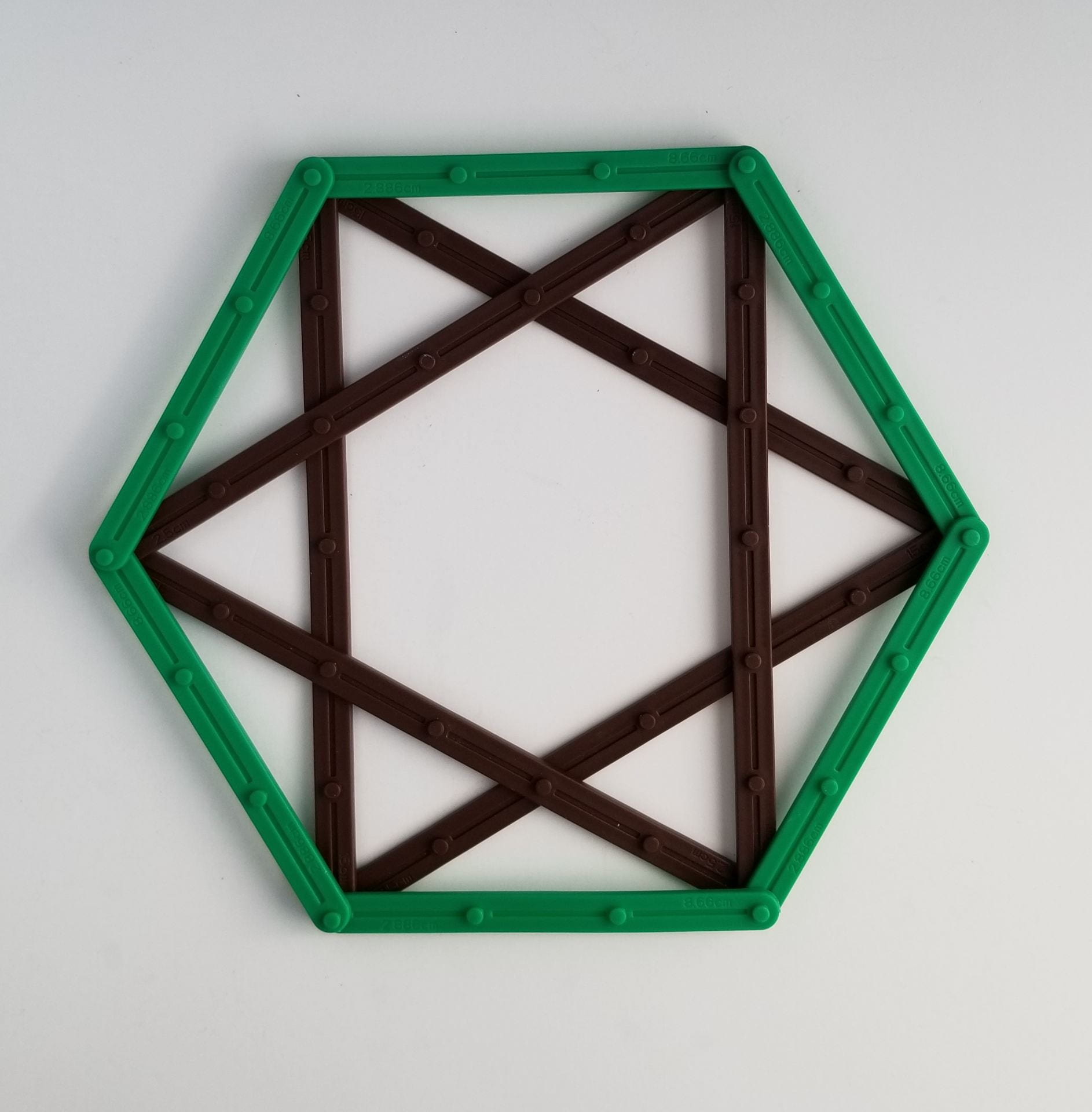Image of the Week: Geostix Patterns
January 2, 2022Geostix Patterns
Have a look at this week’s image: What patterns do you see? Take your time and train your eye on the different parts of the figure. To look for patterns you might ask yourself questions like:
- What parts do you see?
- What relationships do you see between different parts?
- What is equal?
- What repeats?
This image – and many others on our website – was constructed out of a tool called Geostix, which have color-coded pieces of different lengths, with snaps at regular intervals. The color-coding helps decompose this shape into a host of component parts that can be compared or connected. You and your students might focus on only a few of the parts or think across the whole image. Ultimately, one big question is, How did you see the shape? Different people will interpret the figure differently, highlighting or foregrounding different parts and letting others recede. Help you students to discuss what they were paying attention to and the relationships they noticed. For instance, children might focus on any one of these parts and relationships:

Notice that students of any age could engage with the patterns and relationships in this image, from simply noticing repeated figures (whether or not students have names for them) to using transformations and symmetry as tools for seeing relationships. In fact, students might even fully decompose this figure by seeing and counting its component parts: 6 brown lines and 6 green lines. Again, we don’t all see in the same way, and we need opportunities to see through the eye of others and help other see through our eyes.
Wasn’t it useful to see the annotated image above? Help your students share their ways of seeing by annotating the image like this, whether with a shared screen or by writing on a paper copy of the pdf shown on a document camera. If you give your students access to the pdf version of this activity, they can highlight or color-code the multiple patterns and relationships they see. You can have students share these using a document camera to help others see what they saw. Or try a gallery walk by posting the different annotating pages around the room and asking students to look for the most surprising patterns or the ones that were the most commonly noticed. If you have access to Geostix or a similar shape constructing tools. Consider giving students a similar set of pieces (here we used 6 longer brown lines and 6 shorter green lines) and inviting them to construct a different figure that uses them and contains patterns. Students can share what they create and the whole class can notice whole new sets of patterns and relationships.
And we invite you to follow us on Twitter! Tweet us the fascinating ideas you students have about our activities or how you’re trying these activities in your space. We can’t wait to hear from you!
To multiplicity, cheers!
Jen Munson and the multiplicity lab group
Read the Archive
Get the Image of the Week
Each week we bring you a new image and activity you can do with your students tomorrow, and we spotlight a feature of the mathematical work that we think is important for students’ learning and your teaching.
Stay connected and see what's new.

